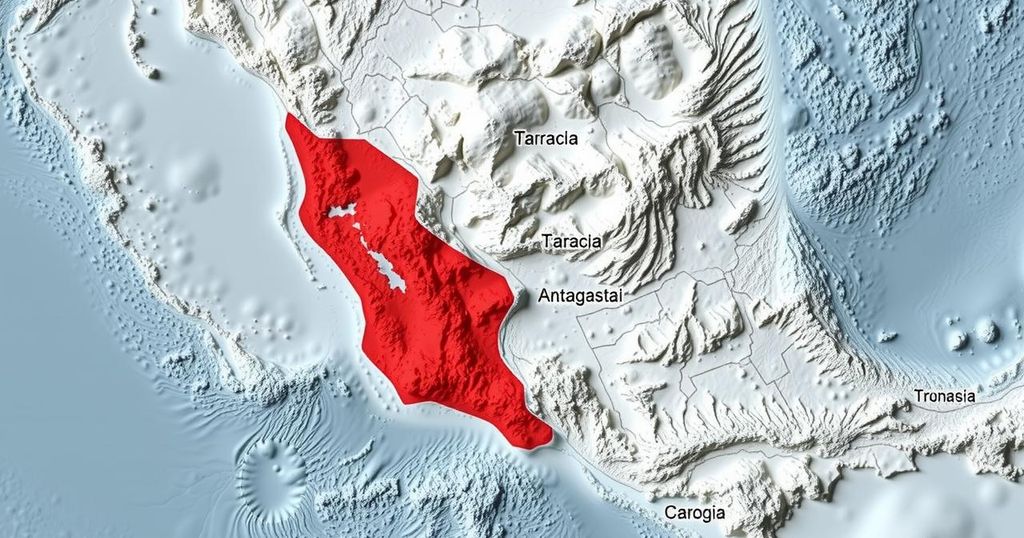A M6.1 earthquake struck the Tarapaca-Antofagasta border region of Chile on January 2, 2025, at 20:43 UTC, with a depth of 99 km. Approximately 169,000 people experienced moderate shaking, and 442,000 felt light tremors. The USGS has issued a Green alert, indicating a low likelihood of casualties or economic losses despite the presence of some vulnerable building types in the area.
On January 2, 2025, a significant earthquake of magnitude 6.1 struck the border region of Tarapaca-Antofagasta in Chile at precisely 20:43 UTC. The United States Geological Survey (USGS) has recorded a depth of approximately 99 kilometers (61 miles), while the European-Mediterranean Seismological Centre (EMSC) reported a slightly shallower depth of 91 kilometers (56 miles). The epicenter was located approximately 85 kilometers (53 miles) north-northwest of Calama, which has a population of 143,084, and about 118 kilometers (74 miles) east-northeast of Tocopilla, home to 24,460 people. Initial estimates suggest that around 169,000 individuals experienced moderate shaking, while an additional 442,000 felt light tremors.
In response to this seismic event, the USGS has issued a Green alert indicating a low probability of casualties and minimal economic loss from the earthquake. This assessment is based on the fact that many structures in this region exhibit earthquake-resistant designs, although there are still vulnerable types, such as adobe block and stone masonry constructions, which may not withstand severe shaking. Past earthquakes in this area have sometimes led to secondary hazards, including landslides, increasing potential impacts on the local population.
Chile is a seismically active country located along the Pacific Ring of Fire, where tectonic plates frequently interact, leading to earthquakes. The Tarapaca-Antofagasta region is no stranger to seismic activity, and its population is typically prepared for such natural events. The region’s construction standards vary, with many buildings designed to endure tremors; however, older structures may be less resilient. Understanding the recent seismic event is essential for assessing its potential impact on local communities and infrastructure. Mitigation efforts and emergency preparedness are crucial in reducing vulnerability to such disasters.
In summary, the M6.1 earthquake that occurred on January 2, 2025, in the Tarapaca-Antofagasta border region has been assessed as having a low probability of causing fatalities or significant damage, thanks to the region’s established earthquake-resistant building practices. While a substantial number of residents felt the tremors, the overall infrastructure is resilient, although caution is warranted given the presence of vulnerable structures. The ongoing monitoring and analysis of seismic activity in Chile remain crucial to safeguarding the populace.
Original Source: watchers.news






